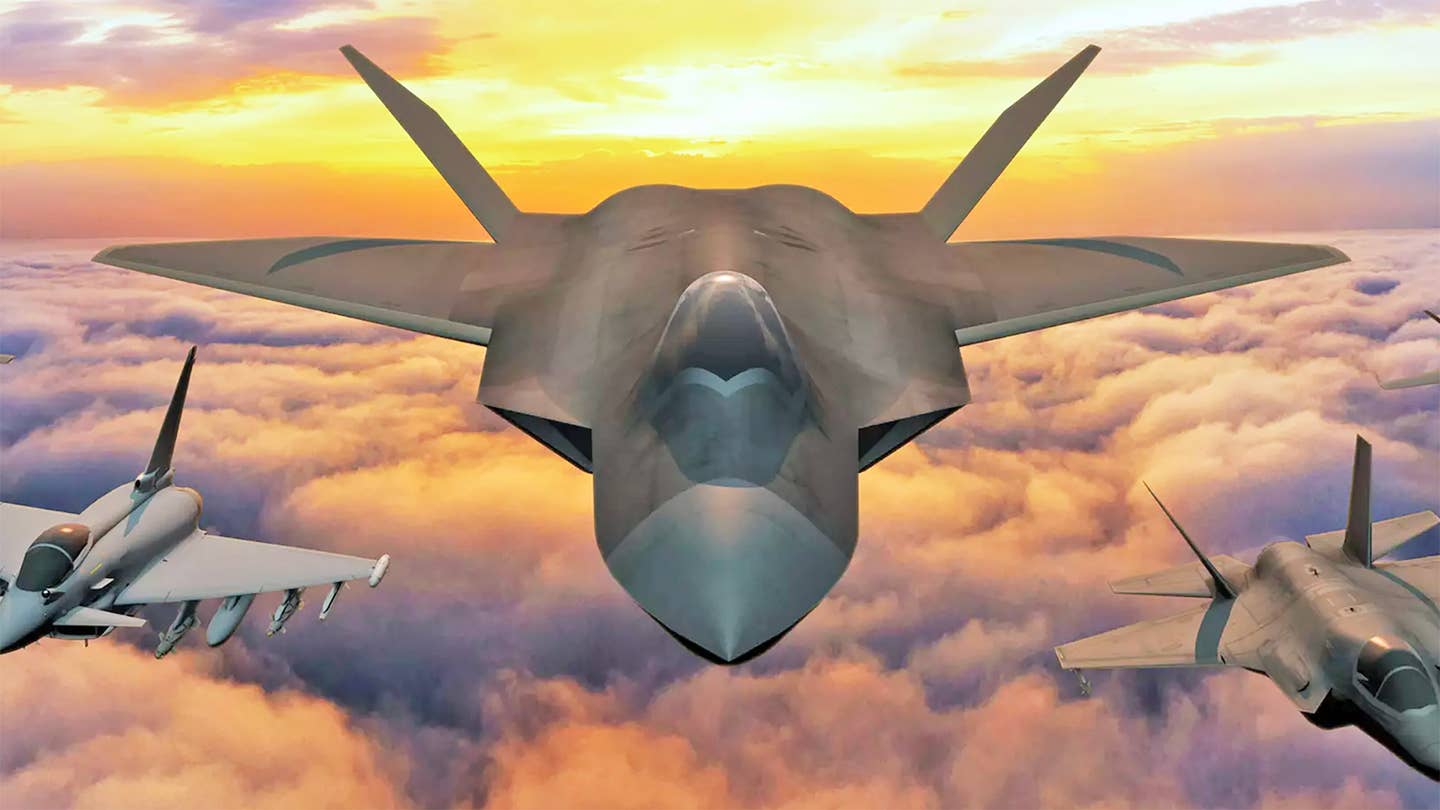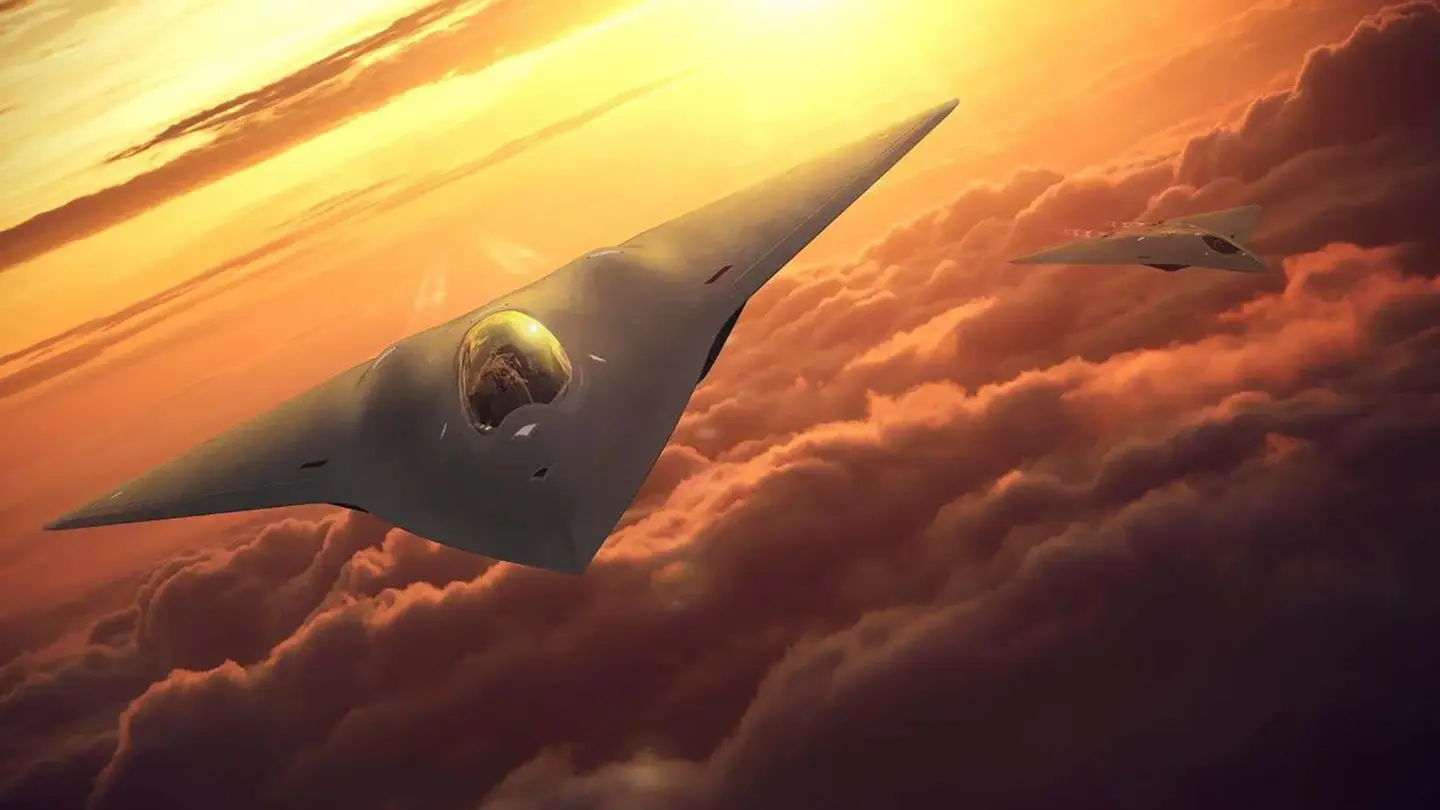Traditional allies, the US and the UK are pursuing a separate sixth-generation fighter program. However, in what could come as a twist, a US official hinted that there is room for collaboration between the British Tempest and American NGAD.
The United States air attache in London, USAF Col. Charles E. Metrolis, said in an interview that developing separate fighters does not mean there could be no future collaboration between the two nations on sixth-generation technology, capabilities, and best practices.
The comments were made as the defense contractor BAE Systems recently presented a new concept model of a potential Tempest configuration at the Farnborough Air Show. Britain is also reportedly working on the technology demonstrator aircraft, with the first test flight due in the next five years by 2027.

In contrast, the US Next Generation Air Dominance (NGAD) program includes a fighter jet demonstrator flying for two years since late 2020. While it has been kept a secret by the US Air Force due to the matter’s sensitivity, the NGAD manned platform is expected to be a tailless aircraft with stealth capabilities.
US Air Force Secretary Frank Kendall informed in June 2022 that the dominance fighter program’s essential technical and industrial development phase had begun. Kendall said the Air Force conducted early experimental prototyping on NGAD starting in 2015.
The NGAD program has no known public international partners. In contrast, as part of the Tempest program, Britain has partnered with states like Sweden and Italy. It remains in talks with Japan to merge its F-X sixth-generation fighter program with the Tempest, as previously reported by EurAsian Times.

The US and UK have manned platforms at the center of their sixth-generation fighter programs. However, the Tempest refers to the manned combat aircraft effort within the British (as opposed to European) Future Combat Air System or FCAS.
The sixth-generation Tempest is being developed in the United Kingdom as part of the Future Combat Air System (FCAS) program, involving BAE Systems, Leonardo UK, MBDA, and Rolls-Royce.
In contrast, the NGAD’s prime contractor, or at least its manned component, has not yet been chosen by the Air Force.
That being said, Kendall recently stated that the final downselect is not all that far away. In addition, if the remarks made by the Air Force Secretary are anything to go by, each aircraft will cost several hundreds of millions of dollars, surpassing the cost of F-35s.
NGAD And Tempest
The US NGAD contrasts with the F-35 fifth generation fighter development, essentially a collaboration between several countries. The UK led the way as the program’s solo Level 1 partner and the country that had contributed the most financially besides the US to the Joint Strike Fighter’s development.
Metrolis suggested that there could be some collaboration in the upcoming years, even though the two countries appear to have separated for their sixth-generation programs.
He further stated that the UK’s opinions on the development and use of the sixth generation were welcome. However, he wasn’t sure what that would entail.
“It’s going to be the latest technology on both sides. So if they have a particular insight or capability they can share, or we have something we can share with them, that’s good for the alliance,” Metrolis said. It’s best practices. There will be some avenue for crosstalk in the future in terms of development.”

The primary role of the NGAD aircraft would be air dominance, as the name suggests, but it can also strike ground targets. Much more than a ‘new fighter,’ the NGAD is a broad initiative aimed at creating a system of systems that will include unmanned drones, manned jets, and a new generation of networking technologies.
Tempest, a sixth-generation stealth combat aviation platform, is planned to replace the fleet of Eurofighter Typhoon starting in 2035 gradually. As for the NGAD, it will replace the F-22 Raptors, which will begin retiring by the end of this decade.
The Raptors are being used to test the latest technology for the NGAD crewed aircraft.
The US Air Force is considering two distinct configurations of a single design. The first of these would be designed with the European theatre in mind. In contrast, the second would have added fuel and other modifications made specifically for the long-range, long-endurance missions for the Indo-Pacific.
:quality(70)/cloudfront-us-east-1.images.arcpublishing.com/mco/KDQ6S2ZFQNAX7ANHB7KZRKO5ZY.jpg)
Contrarily, it is likelier that the Tempest fighter will be scaled for European operations and could have more range than the Typhoon.
It is evident in more ways than one that the US and the UK are approaching their sixth-generation manned tactical air combat platforms differently. The development also depends on their respective security architecture. However, despite the critical differences in their programs, there could still be scope for collaboration.
Scope Of Collaboration
NGAD and Tempest are both being pursued using a “system of systems” strategy in addition to the general necessity to produce new-generation manned aircraft. Both include complementary technology such as a new generation of air-launched weapons, networking, sensors, and drones, including the loyal wingman type.
According to Col. Metrolis, it will be the most recent technology on both sides. “As a result, it would be excellent for the alliance whether they [the British] have a certain understanding or capability they can contribute, or if we have something we can share with them,” he said.
There are separate NGAD initiatives for the US Navy and US Air Force. The aircraft is depicted as a triangular-shaped warplane without a vertical tail in the artist’s rendering. The fighter plane for the NGAD program will have increased speed, maneuverability, stealth technology, and AI-assisted data processing.
“It’s worth pointing out how NGAD and BAE System’s “Team Tempest” are two separate efforts. But they have bleeding-edge design and engineering processes in common that will revolutionize global aerospace and maybe the rest of global manufacturing. One point of cooperation I can imagine the NGAD program and Tempest will benefit is a common engine type.
The NGAD seeks to launch a sixth-generation fighter and its accompanying UAVs in less than a decade so that the F-22 is retired sooner rather than later. Having a Rolls-Royce engine for it–Rolls-Royce is part of Team Tempest after all–saves a lot of time and smoothens the interdependence with a key ally”, said Miguel Miranda, a Philippines-based military and defense analyst.
The NGAD is additionally being developed to perform unmanned missions and participate in manned-autonomous teaming, in which human pilots collaborate with drones and unmanned platforms like Loyal Wingman planes.

The UK is also considering the prospect of drones that act as a wingman and how they might fit into the upcoming FCAS architecture. The drones required for this will be decided by the UK Royal Air Force’s Lightweight Affordable Novel Combat Aircraft (LANCA) unmanned initiative.
There could be some scope for collaboration between the two programs in this area. “The US was approaching the NGAD with F-22-like secrecy, but with the UK and Europe catching up, the 6th Generation advantage is gone. NGAD has many elements, but a manned fighter and a loyal wingman are the commonalities between the two programs.
Possibly, the common elements can be shared with the AUKUS countries and Japan and South Korea. It is also possible that the US can keep its dominance by weaning away some European countries too for sales”, said aviation expert Joseph P. Chacko.
Like the F-22, the US Air Force’s NGAD manned platform will probably remain the sole property of the Pentagon. Still, there might be a case for making other companion technologies within the program accessible to the UK. This sensitive program cooperation between the United States and the United Kingdom has a long history, including nuclear propulsion technology.
While both programs are in a nascent stage now, their respective Air Forces could identify the areas of collaboration, and a coalition could be worked up if there is political will — a prospect that might become clearer with time.
- Contact the author at sakshi.tiwari9555@gmail.com
- Follow EurAsian Times on Google News




